Returning Home
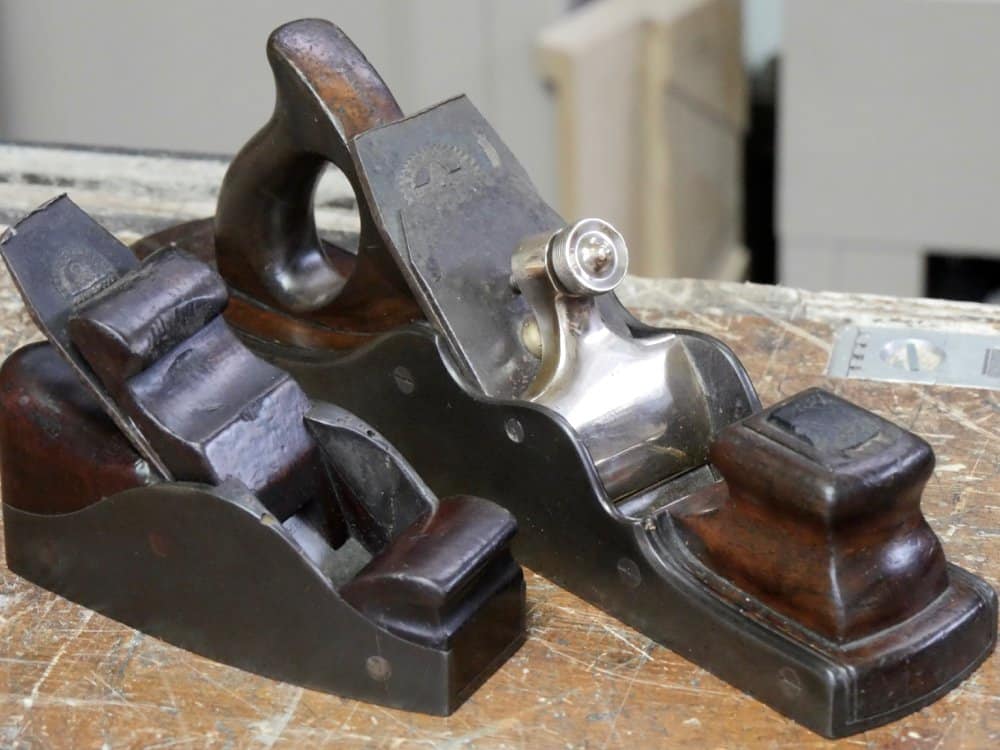
During Joseph’s recent trip to the USA last week he retrieved two planes I was sorely missing in my personal plane family. It is hard to express what you feel when certain tools have been lost, irreparably and permanently damaged, misplaced or displaced because, if they were working tools as a significant part of your worklife, they simply cannot be replaced. Such are these two planes of mine. Why is that so? Well, the planes are part of who I am because of course I used them through three decades, but more than that, it’s also what they meant to Mr S Goodwin and Mr J Whittaker, the two primary former owners.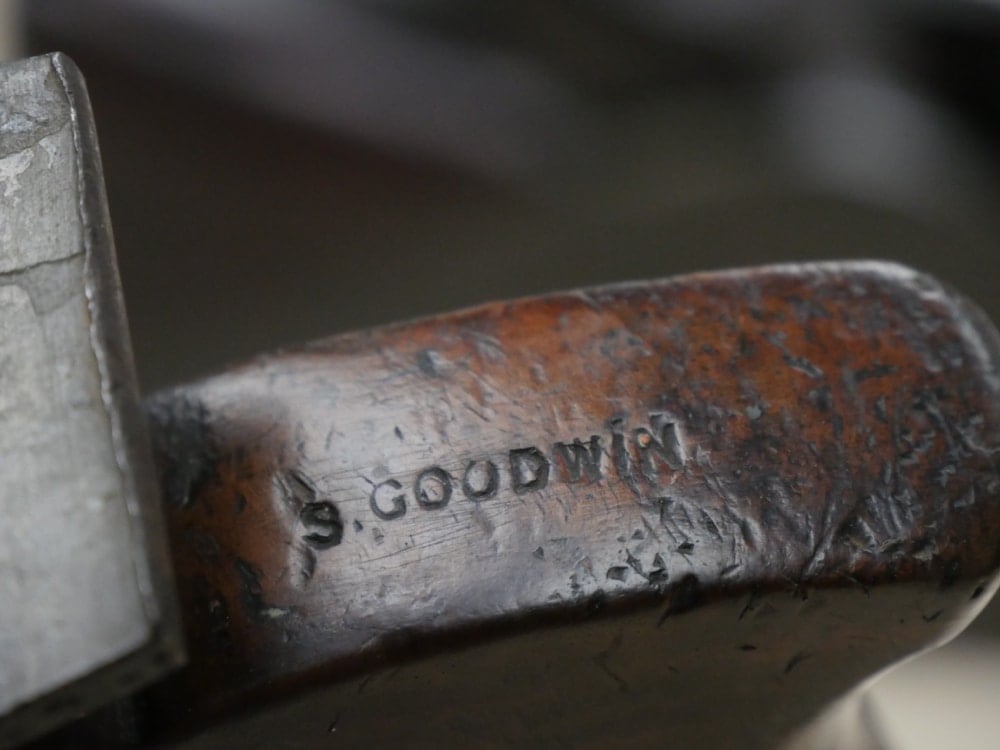
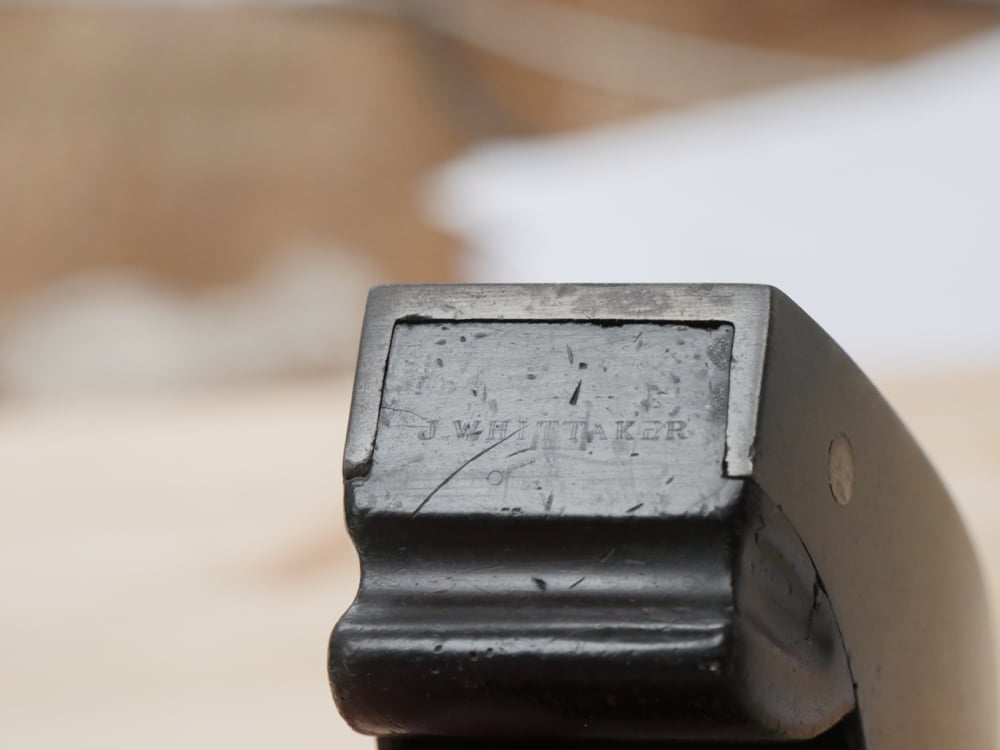
Just look at the fineness of this name stamp. Vertical and angled lines are twin lines and the crossing lines are single lines. Delicate and lovely in its date and today also.
Bronze is strong, more than equal to task resists distortion and is also corrosion resistant, which is why it’s used for boat propellors and much metal work on ocean-going vessels.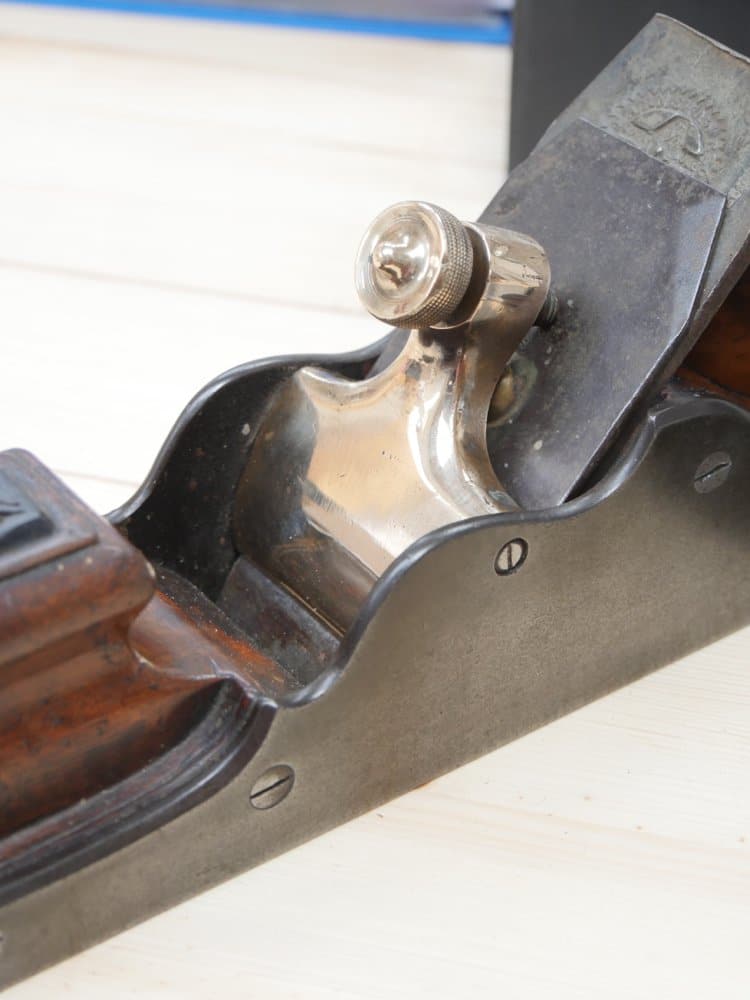
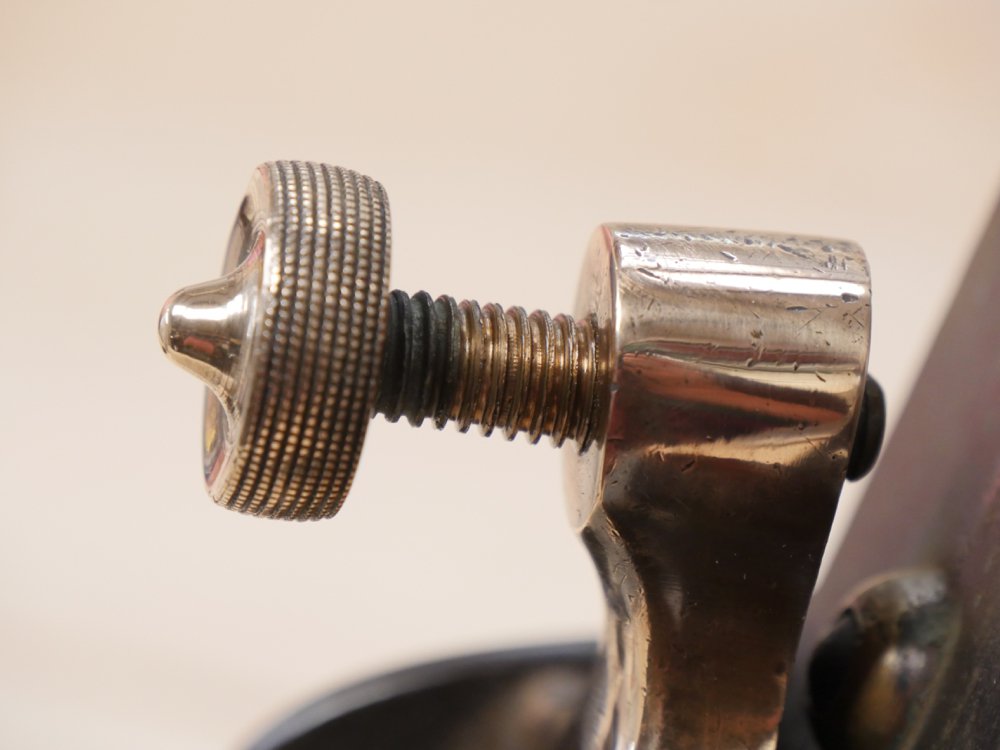
This bronze work includes the threaded elements to the pressure application securing the cutting iron assembly.
Things unite these two planes that may be surprising but not at all accidental. The bedded angle of both planes are similar, but the combined bed angles and the taper of the plane irons in both planes conclude identically at 134° or 51° depending on which direction you take the angle from. These pre mechanical depth-adjuster planes, planes without threaded adjusters and levers, are tap adjusted, which is efficient and effective once you are used to it.
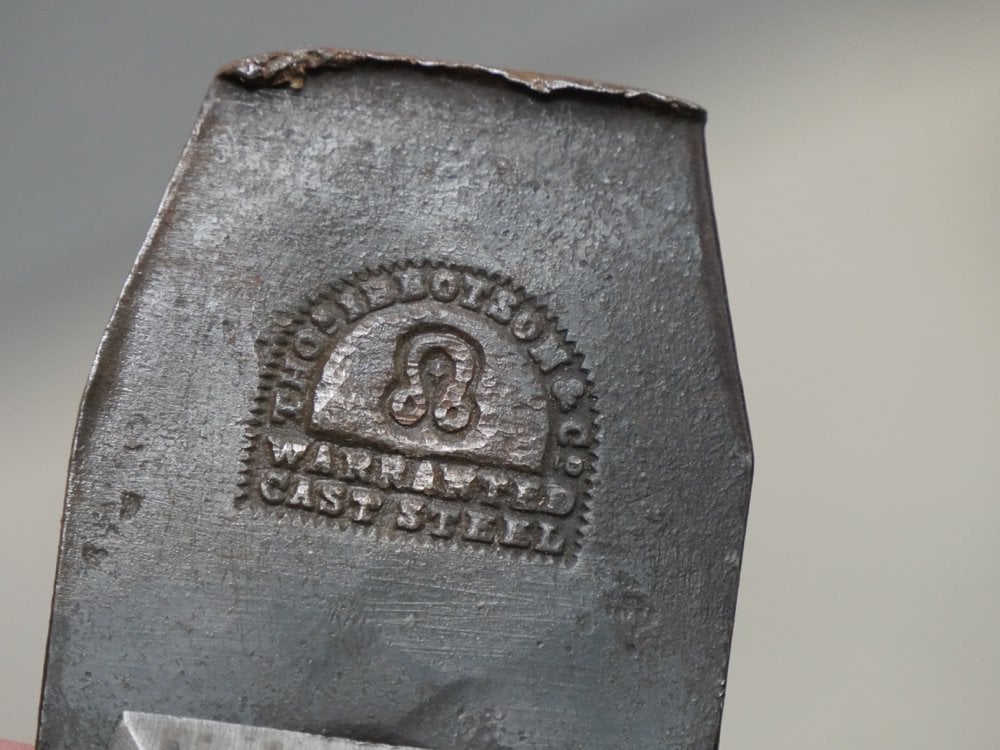
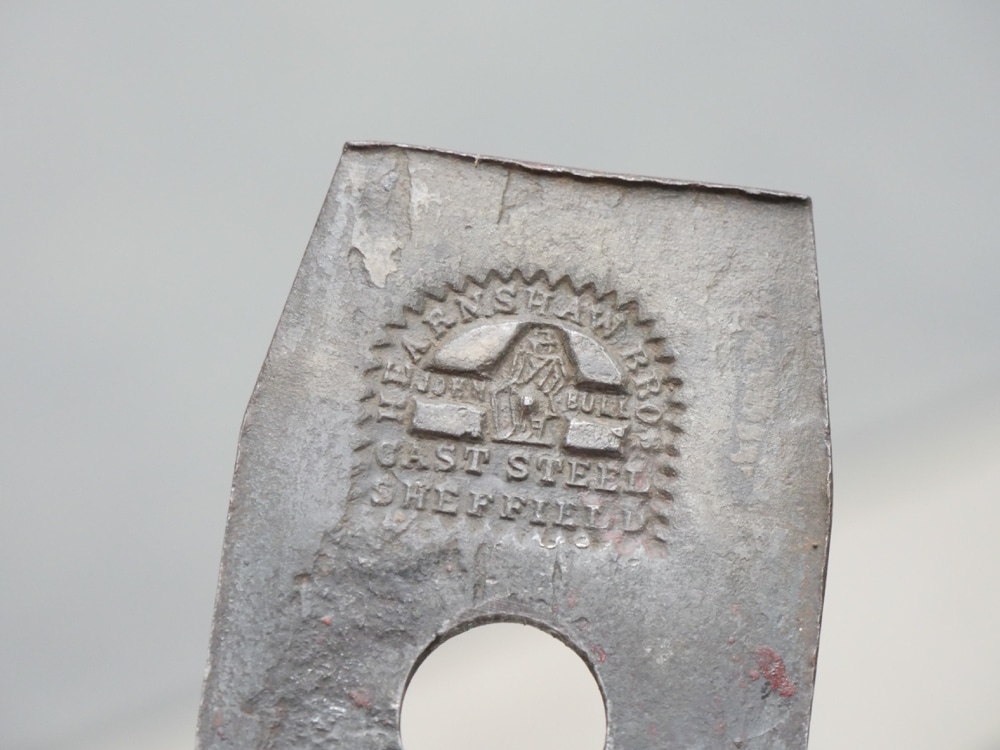
The planes we are discussing here date from the mid 1800s. Cast metal bodies were common enough and many craftsmen bought the castings directly from the factory foundry gates. It was less expensive, easier than wood and they could develop their planes as works of art and to their personal liking. That’s often why some infil planes, and these two are both known as infil planes, are drop dead ugly. This can be governed by the foundry work. If that is the case then the infil work often follows the same course because the woodworker’s work is governed or limited by the foundry casting itself.
Some castings were sold as flawed castings. In case above the casting has air bubbles cast into the casting (top of arches) because no allowance was made for air pockets, captured in the sand mould and the poured metal, to exit the sand the mould was cast into. The foundry man developing the casting has different dynamics at play. One is to develop a mould that is designed for the escape and then to pour the molten metal at a rate that allows the air to exit through the molten metal without trapping the air in through the solidifying of the metal in contact with the cooler atmosphere surrounding the flasks and the sand mould also. Chipped castings and even cracked castings were sold too, provided they either would not be seen, being hidden in the casting, or the crack is arrested by surrounding metal mass. I have seen both types and in both types the planes were mid 1800s planes. Most of these planes are of course still fully operational, usually with little unmanageable degrade. 
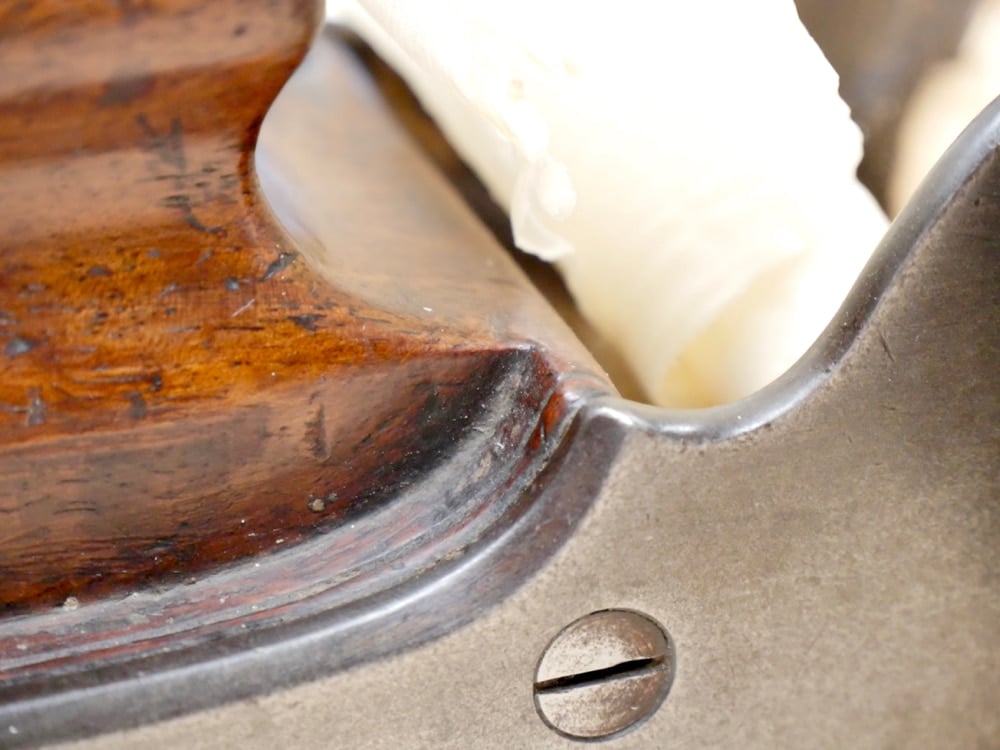
Looking at the profiling this man took to develop his plane shows his attention to detail. Small detail goes a long way.
the last owners before me would be fourth and fifth generation owners but in both cases were no loner still in use. In reality most hand planes were already being abandoned by the beginning of the 20th century because of the gain machine woodworking had in commercial realms. This progression more slowly impacted home woodworkers but today we have seen a marked increase in the use of hand tools to complement the use of machines. This is because home woodworkers, amateurs if you like, have evolved to become well-versed artisans in both realms. This unique combination means that they are well equipped and highly efficient survivalists of industrialism. In many ways they are the extension of those who made these two planes. Here, in say the latter case, they were engaged do-it-yourselfers deriving the same sense of self-fulfilment the men who developed their planes had; in the former, men expressing themselves and who they were in what they made.
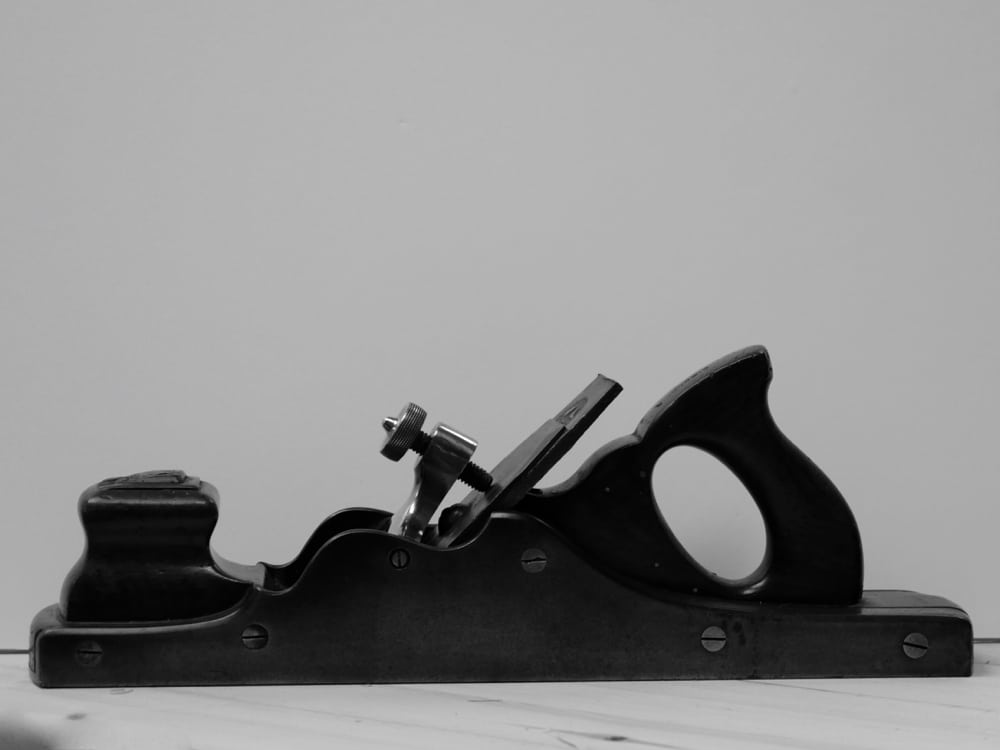
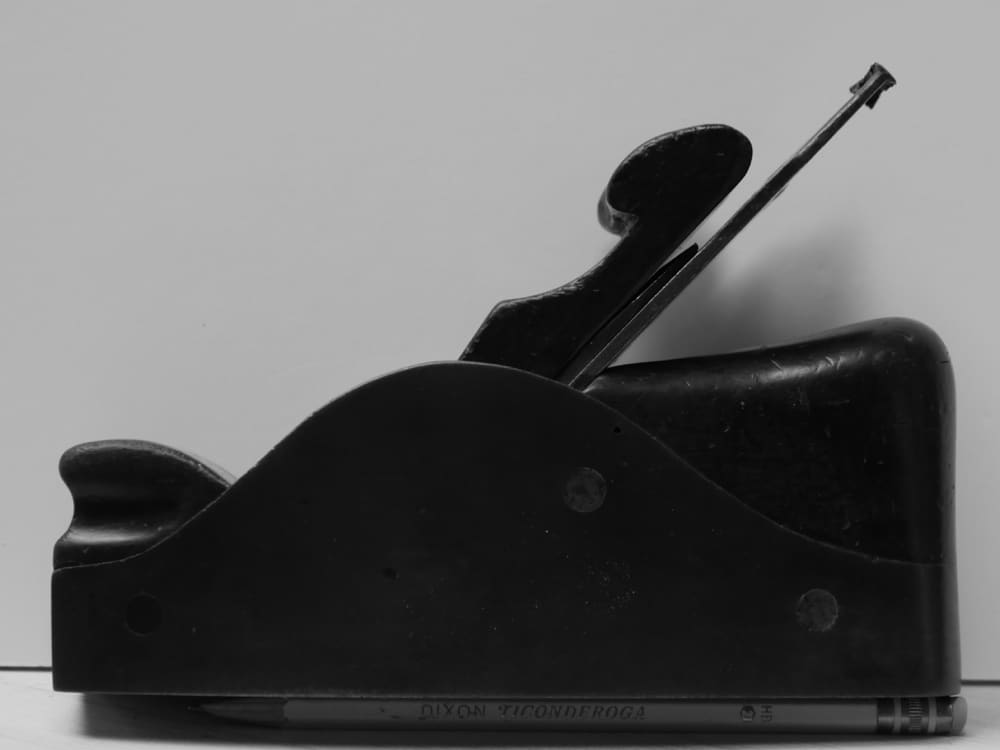


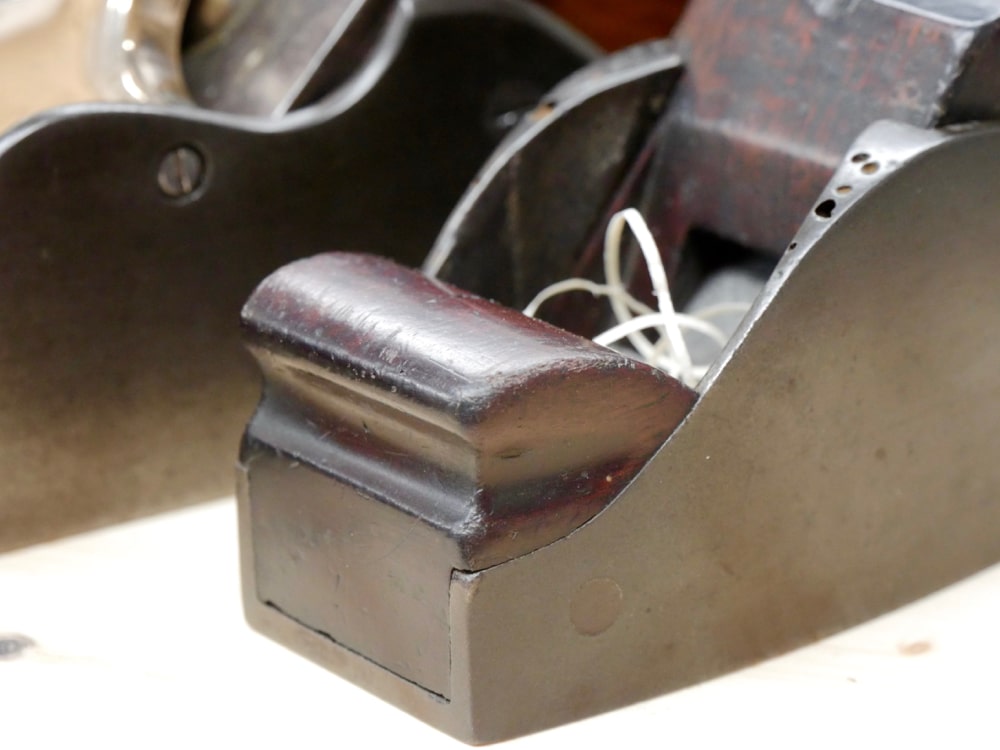
Beautiful planes Paul, I’m envious. Have to start paying attention to planes like this should I be fortunate to run across them on Ebay but even better yet at a garage sale where the seller may not appreciate the value of them.
Off the subject but concurrent with the timing. Wednesday, August 17 or 18, I downloaded “How To Make a Table” episode 2. This is Thursday, August 25, haven’t seen any posts of the next episode. What is the status of this weeks Woodworking Masterclasses? If it is not quite ready yet or server difficulties I understand. Much rather for it to be late but of Paul Sellers quality than have it sent out the door before it is ready.
Thanks for sharing the planes and the heads-up should I come across any.
Have you checked your spam? Only mention this as for some reason emails from masterclass were being redirected into my spam folder
Checked my Spam back to Tuesday the 23rd. Nothing that says Masterclasses. Thanks for the reply. Did you get something about the Masterclasses on Wednesday?
Glad they were retrieved. But how did you come to be separated from them? That sounds like a tease. And what did you and Joseph have to go through to get them back? You’ve left us hanging.
holding another man’s plane is a link to the past – something is transmitted through the well-worn applewood handle or the nicks and bruises of a forgotten job. 100 years have passed and I can only aspire to use the tool as well as my predecessor did.
“some old things are lovely. warm still with life….of the forgotten men who made them.”
D.H. Lawrence
Um, when something I dearly want to hold in my hands again has gone missing, and no foul play is even considered, some kind souls find a way to tell me that I really am getting a bit older. Aside from the clutter that surrounds me as a result of that, there’s a certain amount of internal clutter that comes with the accumulation of years.
When I do unexpectedly find the object right there at hand, there’s a special joy in reuniting with a part of my past life.
Hi Paul
I have a plane very similar to yours, without side screws it has a wooden wedge
Blade is marked Ward………550 X 70 mm sole ……with a black strike button
It needs a good clean and sharpen.
I would love to know its approx age….any ideas please? I wonder if it should have a screw cap like yours as wedge is about 8mm narrower than ‘housing’
Thank you John 2V
Just spent several hours cleaning sole…..boiled linseed to wood and twice as much time on sharpening iron……removed all traces of rust
After assembly tried on a piece of 3″ X 2″ beech……what an absolute beauty
So chuffed.
I will make new wedge………shall now be selling my Stanley 6 and 51/2 on eBay.
Seeing yours encouraged me to restore mine….thank you
Paul first off thanks so much for all the knowledge and thoughts you give. I have a question about a plane I have Mabry you or the community here can answer it . it’s a number five and I have flattened the sole but every time I go to take a shaving with it I have to run the iron out a mile before it will cut. I put a straight edge on the length of it and it all lands on it I just don’t get it. Also this could be the problem the iron , lever cap and Mabry the frog are keen cutter I don’t know what the body of the plane is might be a craftsman. I bought it like that second hand. any thought s or comments would be greatly appreciated. Thanks again for the videos and all I go to school every time I watch them.